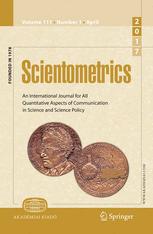Authors: Li Zhang & Erin Watson
Comment: This paper focuses on comparing green and grey (archiving in academic social media or personal/departmental website) OA, for CIHR funded research. Data is extract from WoS and Google Scholar used to determine green and grey OA. The prevalence of grey OA is highlighted, and the low up-take of green OA is shown as not attributed to publisher policies, as most do allow green. The takeaway is suggestion to rethink about ways to archive OA, given the high costs of running an institutional repository.
Abstract: The Canadian Institute of Health Research (CIHR) implemented an open access policy for its grant recipients in 2008. We used bibliographic data from the Web of Science to find out how CIHR-funded researchers in the physical sciences self-archived their publications. We also examined the self-archiving policies of the journals in which the researchers published, and compared the citation rates of two different self-archiving approaches: the green open access route (deposit in an institutional or subject repository) and the grey open access route (deposit in an academic social network or personal/departmental website). Only 14% of the articles were openly accessible through the green open access route, while 37% could be accessed through the grey open access route. We cannot ascribe the low uptake of green open access to publishers’ self-archiving policies, as almost all journals allowed self-archiving through the green open access route. Authors deposited 31% of their publications in ResearchGate, the most popular self-archiving option in our study, while they deposited only 2.1% of their publications in institutional repositories, the least popular option. The citation rates of the various self-archiving approaches did not differ significantly. Our results suggest that it may be time to rethink how to achieve open access.



